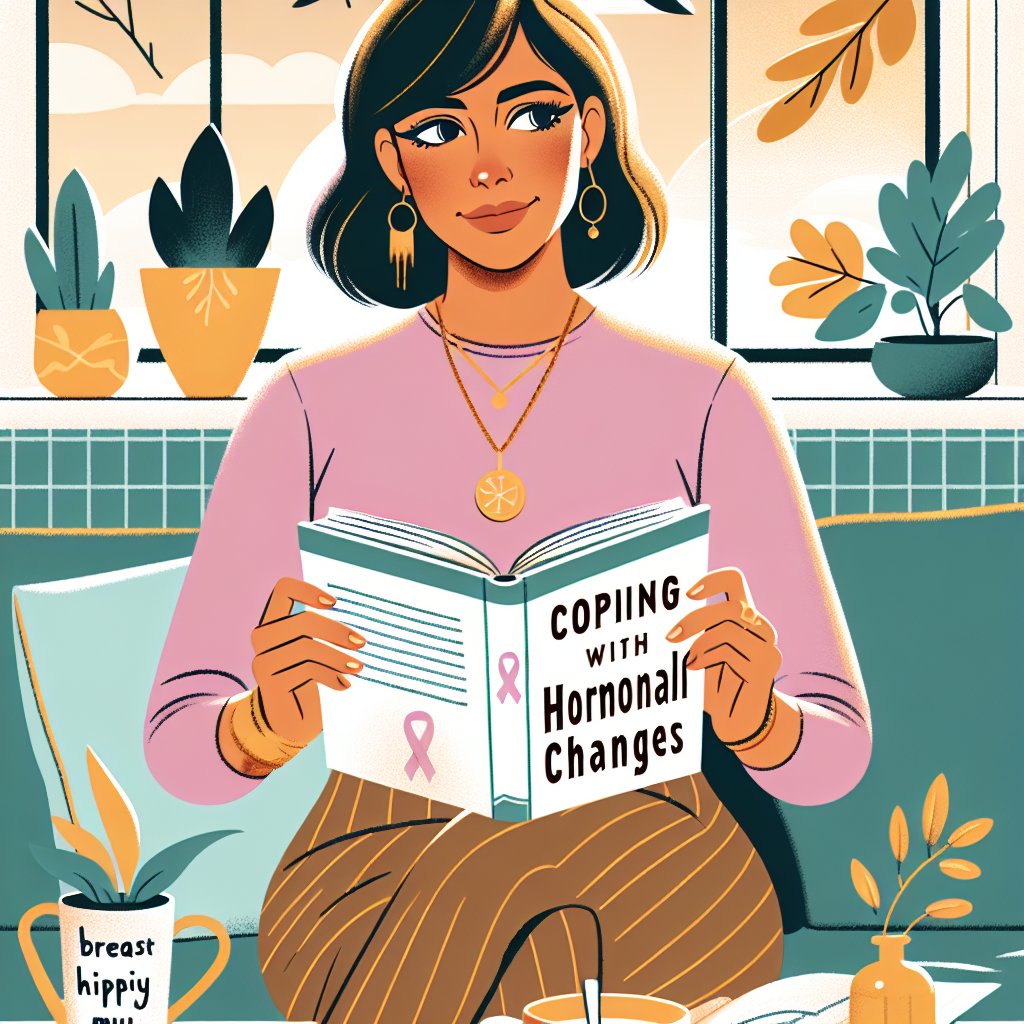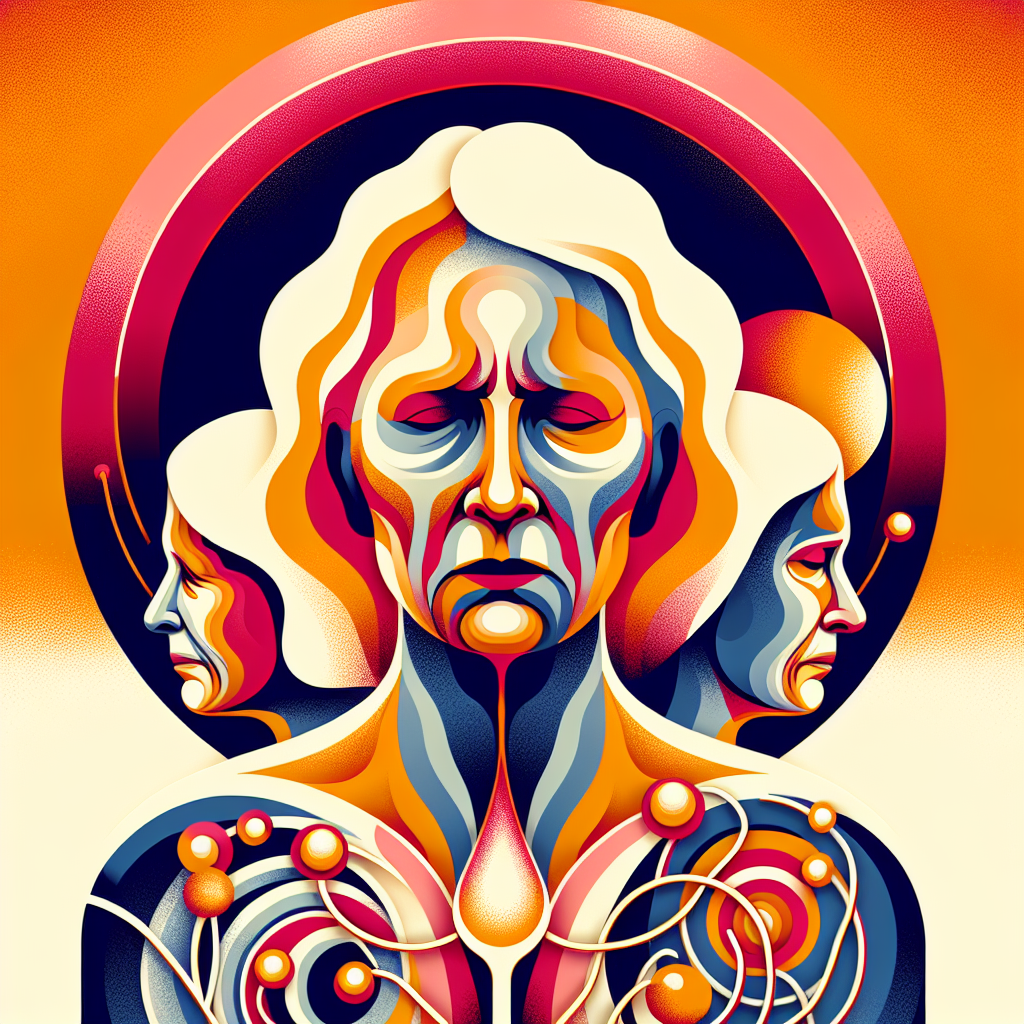
Understanding Hot Flashes
Hot flashes are a common challenge for breast cancer patients, affecting up to 80% of women undergoing treatment.
Managing Symptoms
Discover effective strategies to manage these uncomfortable symptoms with a blend of humor, practical tips, and scientific insights.
Embrace Your Journey
Embrace your journey and find your cool!
Keeping Your Cool: Navigating Hot Flashes in Breast Cancer Patients with Grace and Humor
Picture this: You're in an important meeting, feeling confident and composed, when suddenly it hits—that unmistakable rush of heat spreading across your chest, up your neck, and onto your face. Your carefully applied makeup now feels like it's sliding off, and you're frantically looking for something to fan yourself with. If you're a breast cancer patient or survivor experiencing hot flashes, this scenario probably sounds all too familiar.
Hot flashes in breast cancer patients are incredibly common, affecting up to 80% of women undergoing treatment. But just because they're common doesn't mean they're easy to deal with! Let's dive into this heated topic (pun absolutely intended) with some practical advice, scientific insights, and yes—a healthy dose of humor. Because sometimes when you're feeling the burn, laughter truly is the best medicine.
Why Breast Cancer and Hot Flashes Go Hand in Hand
Hot flashes in breast cancer patients often occur due to treatment-induced changes in hormone levels. Many breast cancers are hormone-sensitive, meaning they grow in response to estrogen or progesterone. As a result, many treatments aim to reduce these hormone levels or block their effects.
Dr. Marisa Weiss, founder of Breastcancer.org, explains it perfectly: "When breast cancer treatments lower estrogen levels or block estrogen's effects, they can trigger the same symptoms as menopause—including hot flashes."
Common treatments that may cause hot flashes in breast cancer patients include:
- Chemotherapy: Can damage the ovaries, reducing estrogen production
- Hormone therapy: Medications like tamoxifen and aromatase inhibitors that block estrogen's effects
- Ovarian suppression: Treatments that stop the ovaries from producing hormones
- Surgery: Removal of the ovaries (oophorectomy)
The severity and frequency of hot flashes in breast cancer patients vary widely. Some women experience mild warmth occasionally, while others endure intense heat several times an hour. As one patient colorfully described it, "It's like someone cranked up my internal thermostat to 'surface of the sun' without warning!"
The Science Behind the Sizzle
What exactly happens during a hot flash? Let's break down the biology without putting you to sleep (which would be counterproductive since night sweats—hot flashes' nighttime cousins—might wake you up anyway!).
Hot flashes in breast cancer patients occur when the hypothalamus (your brain's temperature control center) gets confused. When estrogen levels drop suddenly, the hypothalamus may incorrectly sense that your body is too warm. In response, it triggers a series of reactions to cool you down:
- Blood vessels near your skin dilate (widen)
- Blood flow increases to your skin's surface
- You begin to sweat
- Your heart rate may increase
This entire process creates that characteristic flush, warmth, and perspiration that defines a hot flash. For breast cancer patients, these symptoms can be particularly challenging as they often coincide with other treatment side effects.
Research published in the Journal of Clinical Oncology found that hot flashes in breast cancer patients can be more severe and last longer than those experienced during natural menopause—sometimes persisting for years after treatment ends. Not exactly the souvenir from cancer treatment you were hoping for, right?
Hot Flash Triggers: Know Your Enemy
While hot flashes in breast cancer patients are primarily caused by treatment-induced hormonal changes, certain factors can trigger or worsen them. Being aware of these triggers can help you avoid unnecessary "personal summers."
Common triggers include:
- Heat: Hot weather, saunas, hot tubs
- Spicy foods: That five-alarm chili might need a rethink
- Alcohol: Particularly red wine (sadly, yes)
- Caffeine: Your morning coffee might be contributing
- Stress: Because cancer treatment wasn't stressful enough already
- Tight clothing: Especially synthetic fabrics that don't breathe
One breast cancer survivor shared her discovery: "I realized my hot flashes were always worse after my morning coffee. Switching to half-caf was a game-changer. Not ideal, but better than feeling like a human furnace by 10 AM!"
Cooling Strategies: Practical Tips for Hot Flashes in Breast Cancer Patients
Now for the part you've been waiting for—how to manage these pesky hot flashes! While we can't promise to eliminate them entirely, these strategies can help reduce their frequency and intensity:
Dress for Success (and Coolness)
- Layer, layer, layer: Dress in light, removable layers so you can adjust as needed
- Choose natural fabrics: Cotton, linen, and silk breathe better than synthetics
- Invest in cooling products: Moisture-wicking pajamas and cooling pillows can be lifesavers
- Keep a "hot flash emergency kit": Portable fans, cooling towels, and extra deodorant in your purse
As one clever breast cancer survivor put it: "I've mastered the art of the subtle layer removal. I can go from business professional to business casual in 10 seconds flat when a hot flash hits!"
Lifestyle Adjustments
- Stay hydrated: Drink plenty of water throughout the day
- Exercise regularly: Moderate activity can help regulate body temperature
- Practice stress reduction: Try meditation, yoga, or deep breathing
- Maintain a healthy weight: Excess weight can worsen hot flashes
A study in the Journal of Cancer Survivorship found that breast cancer patients who engaged in regular physical activity reported fewer and less severe hot flashes than their sedentary counterparts. Just another reason to lace up those walking shoes!
Dietary Changes
- Limit trigger foods: Reduce spicy foods, caffeine, and alcohol
- Try cooling foods: Fruits, vegetables, and cold soups can help
- Consider plant estrogens: Some women find relief with soy products, though this remains controversial for hormone-sensitive cancers (always consult your doctor first)
- Stay cool while eating: Hot foods and beverages can trigger flashes
"I started keeping a hot flash diary alongside my food journal," shares Maria, a five-year breast cancer survivor. "I quickly noticed that my afternoon chai latte was almost always followed by a major flush. Switching to iced tea made a noticeable difference."
Medical Interventions for Hot Flashes in Breast Cancer Patients
When lifestyle changes aren't enough to manage hot flashes in breast cancer patients, medical interventions may help. Always discuss these options with your oncologist, as some treatments may not be appropriate depending on your specific cancer type and treatment plan.
Non-Hormonal Medications
Several medications originally developed for other conditions have shown effectiveness in reducing hot flashes:
- Certain antidepressants: Venlafaxine (Effexor) and paroxetine (Paxil) at low doses
- Gabapentin: An anti-seizure medication that can reduce hot flash frequency
- Oxybutynin: Typically used for bladder problems but can help with sweating
- Clonidine: A blood pressure medication that may reduce hot flash severity
A landmark study published in The Lancet Oncology found that venlafaxine reduced hot flashes in breast cancer patients by approximately 60% compared to placebo. Not too shabby!
Complementary Approaches
Some women find relief through complementary therapies, though scientific evidence varies:
- Acupuncture: Several studies show promising results for hot flashes in breast cancer patients
- Cognitive behavioral therapy: Can help change your perception of hot flashes
- Hypnosis: May reduce both frequency and severity of hot flashes
- Herbal remedies: Black cohosh, evening primrose oil (discuss with your doctor first)
Research in the Journal of Clinical Oncology found that breast cancer patients who received acupuncture experienced a 50% reduction in hot flashes compared to those who didn't. One participant noted, "I was skeptical at first, but after a few sessions, I went from 10 hot flashes a day to maybe three or four."
The Social Side: Navigating Hot Flashes in Public
Let's address the elephant in the room—hot flashes can be embarrassing, especially when they happen in professional or social settings. Here are some strategies for handling hot flashes in breast cancer patients with grace and even humor:
- Be prepared: Position yourself near exits, windows, or fans when possible
- Use humor: Sometimes acknowledging the obvious with a light joke helps ("Is it hot in here, or is it just my tamoxifen?")
- Educate others: Brief explanations can increase understanding and support
- Connect with others: Support groups for breast cancer patients can provide validation and tips
One executive and breast cancer survivor shares her approach: "I keep a small sign in my office that says 'Having a private summer moment' that I can discreetly place on my desk during meetings if needed. It breaks the tension and lets people know I just need a minute."
When to Talk to Your Doctor About Hot Flashes in Breast Cancer Patients
While hot flashes are expected during breast cancer treatment, certain situations warrant a conversation with your healthcare provider:
- Hot flashes that severely impact your quality of life
- Hot flashes that consistently disrupt your sleep
- Symptoms that worsen significantly or suddenly change
- Hot flashes accompanied by heart palpitations or chest pain
- Severe anxiety related to hot flashes
Dr. Susan Love, renowned breast cancer researcher, emphasizes: "Don't suffer in silence. There are many approaches to managing hot flashes in breast cancer patients, and your medical team can help find what works for you."
Finding Your Cool: A Personal Approach
Every woman's experience with hot flashes during breast cancer treatment is unique. What works for one person may not work for another. The key is to experiment with different strategies and find your personal formula for staying cool.
As Jane, a breast cancer survivor of eight years, wisely puts it: "Hot flashes became my unwanted companion after treatment, but I refused to let them control my life. Through trial and error, I found my 'hot flash management system'—a combination of cotton clothing, a small fan I carry everywhere, avoiding wine (most of the time), and acupuncture twice a month. Are my hot flashes gone? No. Are they manageable? Absolutely."
Embracing the Heat: Finding Perspective
While hot flashes in breast cancer patients can be challenging, many survivors find ways to put them in perspective. After all, they're often a sign that your treatment is working to reduce hormone levels that could feed cancer cells.
"I've renamed my hot flashes 'power surges,'" laughs Teresa, five years post-diagnosis. "Each one reminds me that my body is fighting to keep me cancer-free. It doesn't make them pleasant, but it does give them purpose."
Conclusion: Staying Cool on Your Cancer Journey
Hot flashes in breast cancer patients represent just one of many challenges on the cancer journey. By understanding their causes, identifying your triggers, and developing personalized management strategies, you can reduce their impact on your quality of life.
Remember that you're not alone—millions of breast cancer patients and survivors are fanning themselves right alongside you. Reach out to support groups, talk openly with your healthcare team, and don't be afraid to advocate for yourself if hot flashes are significantly affecting your wellbeing.
With the right combination of medical support, lifestyle adjustments, and perhaps a dash of humor, you can navigate hot flashes while focusing on what matters most—your health, happiness, and future beyond cancer.
As one survivor eloquently put it: "Cancer took my hair, my energy, and my left breast. I refused to let hot flashes take my joy." Now that's an attitude worth adopting!
















